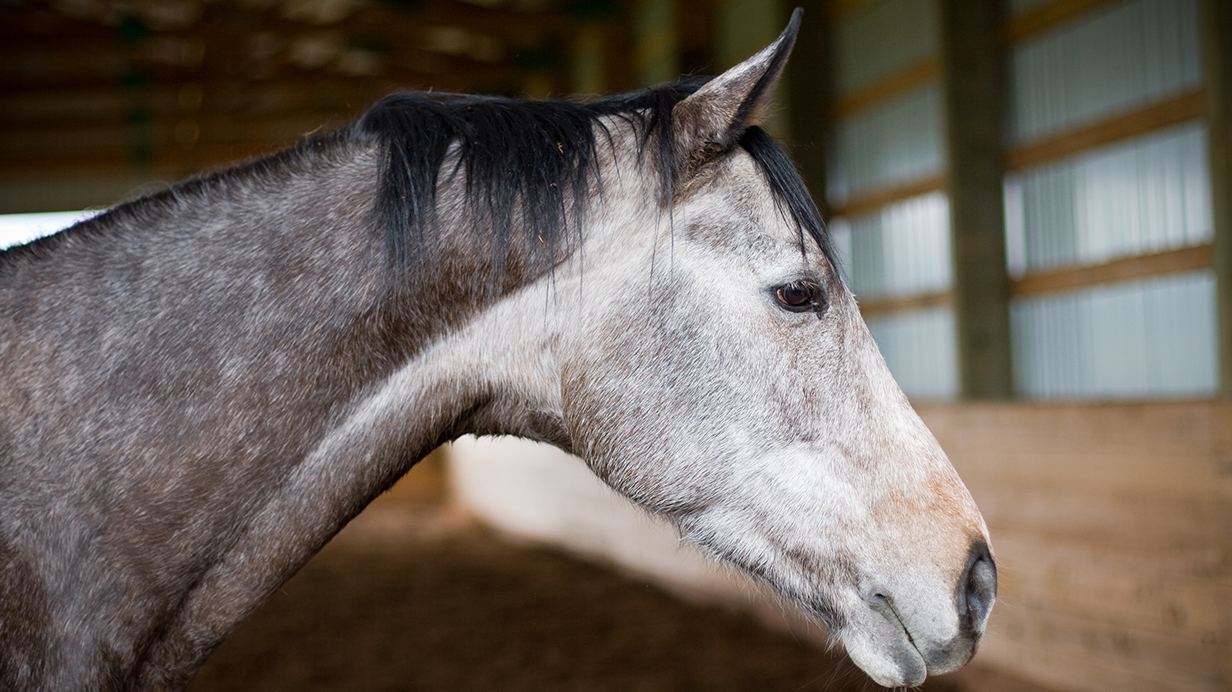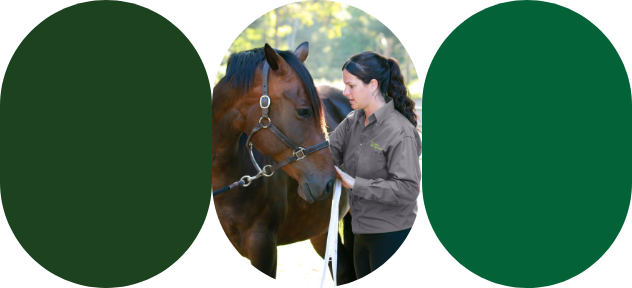Properly feeding a senior horse
Feeding senior horses presents many challenges. Here are a few tips for improving the nutrition of your older horse.
Horses are considered “seniors” at about 20 years old. From that age on, they are more susceptible to metabolic issues like Cushing’s disease, as well as dental table degradation, loss of muscle mass and chronic inflammation. However, depending on their genetics and the care and nutrition received over their lifetime, some horses show few signs of aging.
Assess your horse’s condition
Start by assessing your horse’s body condition and muscle mass. Just because your horse is older does not mean that it should be thin or in an overall poor state. If your horse is losing a bit of weight but still maintaining good muscle mass, it may be that it is getting enough protein and amino acids from its ration but not enough calories.
However, if your horse is growing significantly thinner and losing muscle mass, this may mean that it is no longer able to consume enough dry matter (particularly hay) or that it has a significant nutritional deficiency or some other health problem. If this is the case, you should see a veterinarian to assess your horse’s teeth and general health and talk to an agronomist about feed.
Feed for dental issues
Signs of dental issues in senior horses include the horse consuming less hay and spitting out chewed up hay onto the ground. Its droppings may also look different, and some horses may appear more “pot-bellied” than they used to.
There is a simple but essential step you must take: weigh the amount of hay your horse consumes daily. Horses should eat about 2% of their weight in forage each day, which works out to about 11 kilograms of 90% dry matter hay for a 500 kilogram horse. If you notice that your horse is not eating enough, you will have to make up the rest of the ration with a forage substitute, such as EconoFoin, in an amount equal to what is being lost. EconoFoin should be introduced gradually over a period of 10 to 15 days, and it should always be served wet and soft to prevent choking.
Feed for good teeth
If a veterinary exam shows that your horse still has good teeth, proceed with the usual steps to analyze your feed program, starting with hay analysis.
Once you have done your hay analysis and determined how much hay and feed your horse consumes, make sure its needs are being met by comparing your data to the charts published by the National Research Council. If there are any differences, you can make one of several adjustments to correct your horse’s nutrition:
Replace your hay with a more nutritious, digestible variety.
For example, switch from a first cutting of late-maturity grass to a second cutting of high-quality grass. You may also consider adding legumes, such as alfalfa.
Up your feed or switch to a more nutritious, digestible one.
To add calories and nutrients to your ration, you can increase the daily amount of feed served—within the maximum of 0.4% to 0.5% of the horse’s weight per serving—or switch to a high-fat extruded feed, such as Perfo EXT. Extrusion makes feed more digestible, so it is particularly good for seniors and other horses that require more care to keep in good condition.
Add supplements if needed.
Depending on the amount of feed served and your hay analysis, you may need to supplement your ration with a vitamin and mineral concentrate, such as EquiBalance or Tonix. If your available hay is low in protein, or if you are noticing a loss of muscle mass (particularly along the backbone), adding a protein and amino acid supplement like Topp40 can be beneficial.
Support horses with additional needs.
If your horse has metabolic issues, choose a complete feed with a very low glycemic index, such as LinoFibre or NutriFibre, and meet its vitamin and mineral needs with a specialized supplement. If your senior horse has any intestinal discomfort due to medication or changes in feed, you can support its gut microflora with a supplement like TransiFlora.


